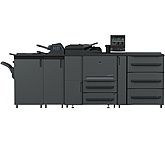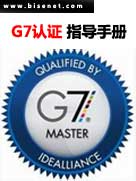1 Influence of dot shape on dot change
First of all, use Coreldraw8 as the test tool for tone test-gray scale, its tone range is 5% -100%. The hair arranging adopts 40lpi, 60lpi, 80lpi, 100lpi screen, the screen angle is 45 degrees, and the dots are round and square. The experimental material is coated paper, Offset Paper, 300 mesh screen, screen printing ink (fluorescent pink, fluorescent yellow, fluorescent blue), offset printing ink (red, sky blue, medium yellow, magenta), use X-RITE 528 love X-ray reflection density meter and transmission density meter measure the percentage of dots. Experiment with the above experimental materials and instruments to obtain experimental data (as shown in the following tables), according to these data, the dot percentage (F0) on the film is taken as the horizontal axis, and the dot percentage (Fprint) and dot percentage on the printed matter Increment (â–³ F) is the vertical axis (the difference between the percentage of printed dots and the percentage of film dots) to draw the dot change curve (as shown in Figures 1 to 5).
Experiment 1 Use the same ink, the same line number, the same exposure time, the same printing material, and choose different dot shapes for printing (screen printing green ink, 40lpi, exposure time is 40s, coated paper, square dot and round dot).
From the data of Experiment 1 (Table 1) and the dot change curve (Figure 1), we can see that the largest expansion of square dots and round dots is 50% and 50%, respectively, because the square dots are compared with other dots at 50%. The expansion factor is the highest, because 50% of the dots are connected at the four corners. The corners of the dots are easy to cause ink clogging and increase the area of ​​the dots during printing; the circumference of the round dots is the smallest among all dots, relatively speaking, its dots expand The coefficient is small. Generally, under normal circumstances, the dots are connected around the 70% point, but once the dots are connected, the dot expansion coefficient will become larger, and the dots in the dark tone area will be blocked due to excessive ink volume during printing. , And eventually the dark part of the image loses its proper level.
Table 1 Dot percentages with different dot shapes
Figure 1 Changes in the area of ​​dots with different dot shapes
2 The influence of the number of network lines on the change of network points
Experiment 2 Use the same number of screen lines, the same exposure time, the same substrate, the same exposure time, the same substrate, the same ink type for printing (40lpi, 60lpi, 40s, square dots, coated paper, offset red ink), The measured data is shown in Table 2.
From the data of Experiment 2 (Table 2) and the dot change curve (Figure 2), it can be seen that the higher the number of screen lines, the higher the dot expansion value, and the larger the dot expansion value, which means that the clarity of the image reproduction is guaranteed. In the case of, the greater the difference between the number of color separation lines and the number of screens, the more the tone of the image can be maintained; and the less likely the interference pattern appears repeatedly, because 300 meshes are used in this experiment When using 100lpi screened dichroic film, moire has appeared on the printing plate.
BAIDU_CLB_singleFillSlot ("205919");
According to news from the US wxow website, screen printing machine manufacturers ... [detailed]
 Hangzhou Dongcheng Imaging Company launched thermal CTP and UV-CTP
Hangzhou Dongcheng Imaging Company launched thermal CTP and UV-CTP Recently, Hangzhou Dongcheng Image Technology Co., Ltd. hit hard, ... [detailed]
 Konica Minolta's new black and white bizhub PRO 1200 product report
Konica Minolta's new black and white bizhub PRO 1200 product report Innovative black and white digital printing system-with a more comprehensive comprehensive ... [detailed]
 Shanghai Ziguang Pre-launches PM520 Digital Inkjet Printer
Shanghai Ziguang Pre-launches PM520 Digital Inkjet Printer Shanghai Ziguang Machinery Co., Ltd. will be held in November 2011 ... [detailed]
 Konica Minolta bizhub PRESS C7000 / C6000 Product Report
Konica Minolta bizhub PRESS C7000 / C6000 Product Report On August 5, 2011, Konica Minolta exhibited it in Beijing ... [detailed]
 Hanhua Guanhua unveiled GH794 four-color business printing machine at the All-India Exhibition
Hanhua Guanhua unveiled GH794 four-color business printing machine at the All-India Exhibition The 4th China (Shanghai) All India Exhibition was grandly held on November 14 ... [detailed]







 "The Basic Situation of the National Press and Publication Industry in 2018"
"The Basic Situation of the National Press and Publication Industry in 2018" The National Press and Publication Administration recently released "The Basic Situation of the National Press and Publication Industry in 2018 ...

2020-04-13 | Issue 1112: The Ministry of Ecology and Environment has made a big move to resume work!
2020-04-01 | Issue 1111: Printing package colleges to stabilize employment "a big move"!
2020-03-25 | Issue 1110: Why are more and more printing companies aiming at the block
2020-03-17 | Issue 1109: Central government policies support the resumption of manufacturing enterprises
Scholastic Paper,Woodfree Scholastic Paper,Scholastic Writing Paper,White Scholastic Paper
Puyang Longfeng Paper Co.,Ltd. , https://www.lonfonpaper.com
